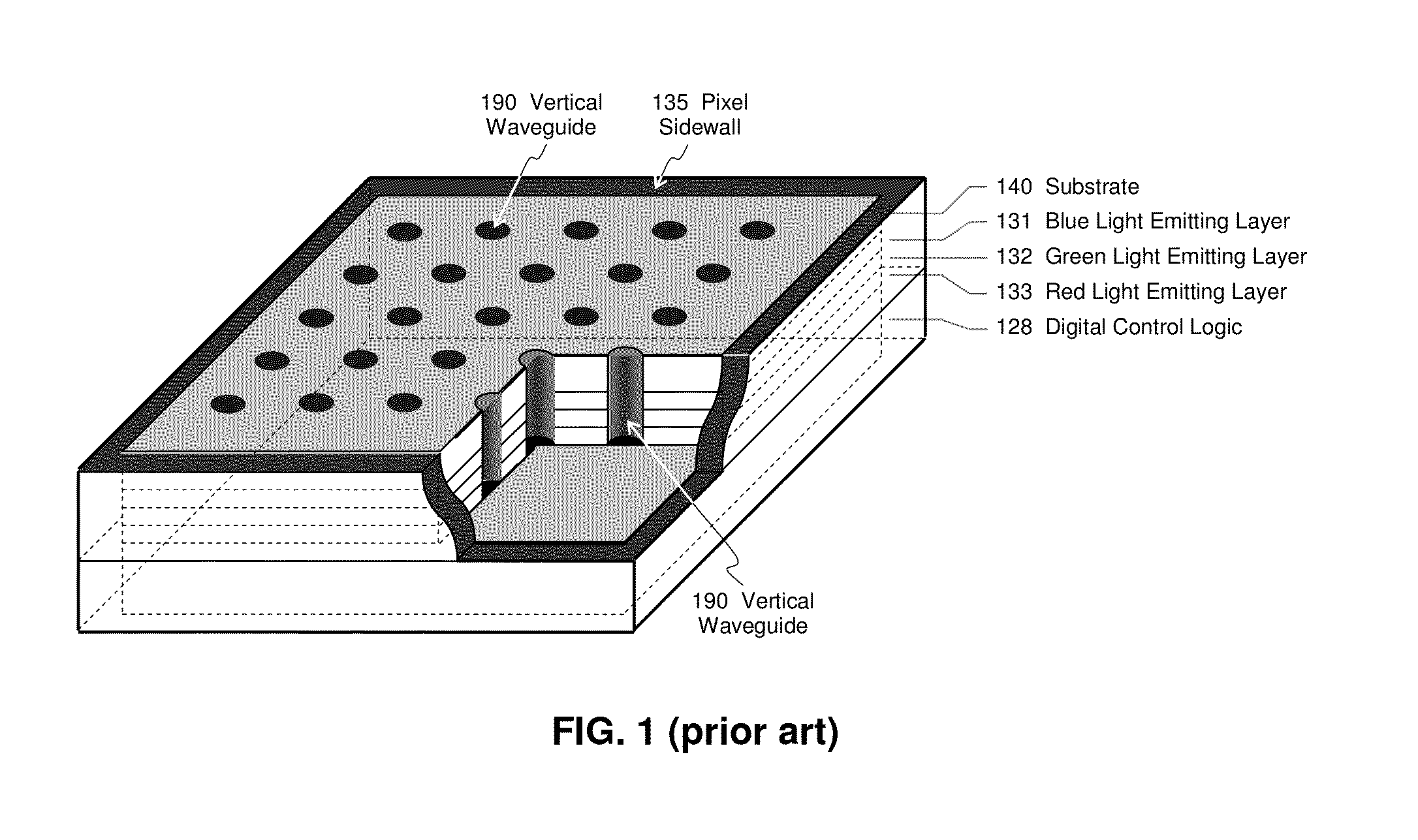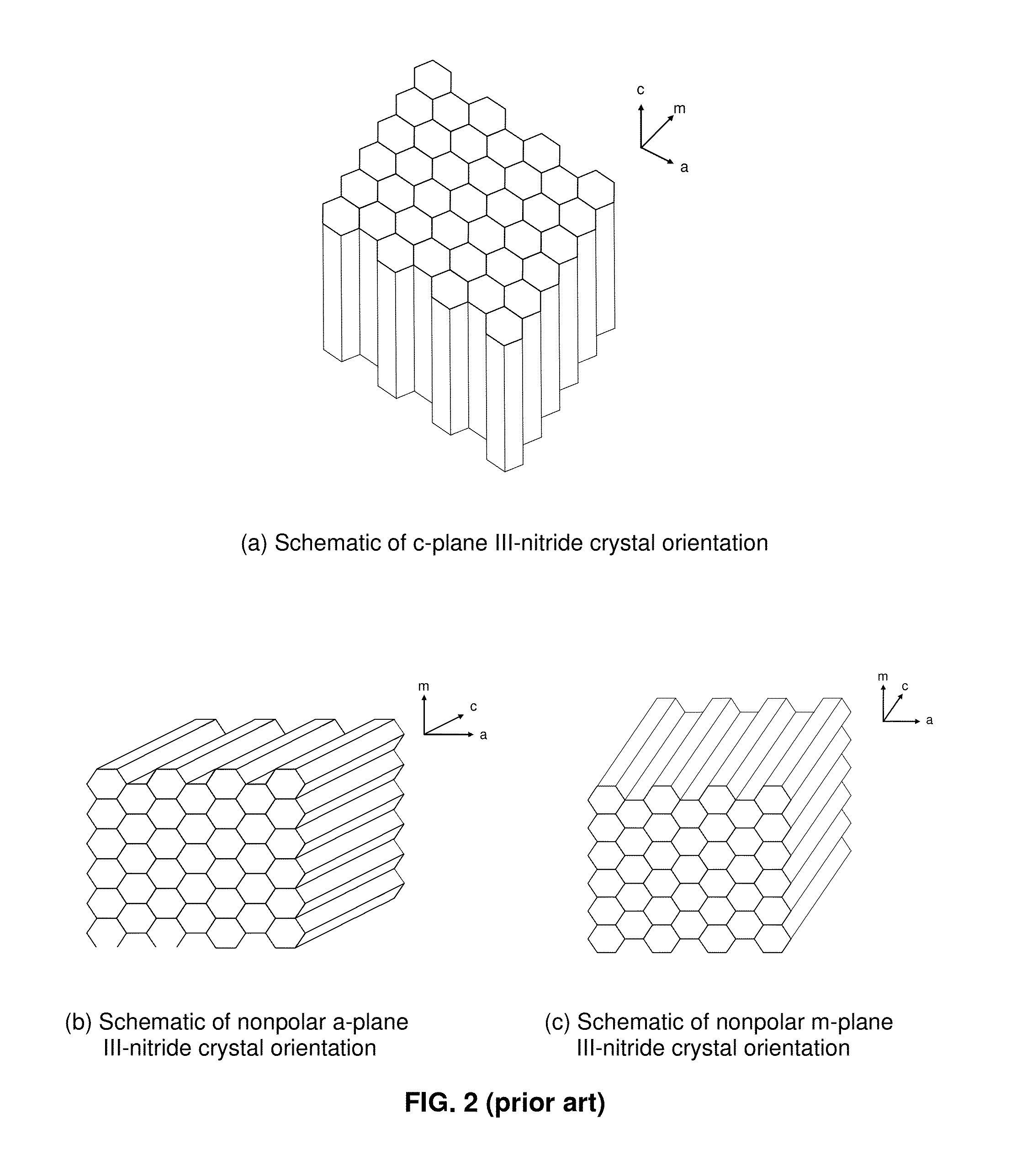Enhanced Performance Active Pixel Array and Epitaxial Growth Method for Achieving the Same
- Summary
- Abstract
- Description
- Claims
- Application Information
AI Technical Summary
Benefits of technology
Problems solved by technology
Method used
Image
Examples
Embodiment Construction
[0058]A new class of emissive micro-scale pixel array devices has been recently introduced Ref [1-6]. These devices are solid state light (SSL) based and feature high brightness, very fast light multi-color intensity and spatial modulation capabilities in a very small single device size that includes all the drive circuitry. The SSL light emitting pixels of one such a device may be either a light emitting diode (LED) or laser diode (LD) whose on-off state is controlled by the drive circuitry contained within a CMOS chip (or device) upon which the emissive micro-scale pixel array is bonded. The size of the pixels comprising the emissive array of such devices would typically be in the range of approximately 5-20 micron with the typical emissive surface area of the device being in the range of approximately 15-150 square millimeter. The pixels within the emissive micro-scale pixel array device are individually addressable spatially, chromatically and temporally, typically through the d...
PUM
 Login to View More
Login to View More Abstract
Description
Claims
Application Information
 Login to View More
Login to View More - R&D
- Intellectual Property
- Life Sciences
- Materials
- Tech Scout
- Unparalleled Data Quality
- Higher Quality Content
- 60% Fewer Hallucinations
Browse by: Latest US Patents, China's latest patents, Technical Efficacy Thesaurus, Application Domain, Technology Topic, Popular Technical Reports.
© 2025 PatSnap. All rights reserved.Legal|Privacy policy|Modern Slavery Act Transparency Statement|Sitemap|About US| Contact US: help@patsnap.com



